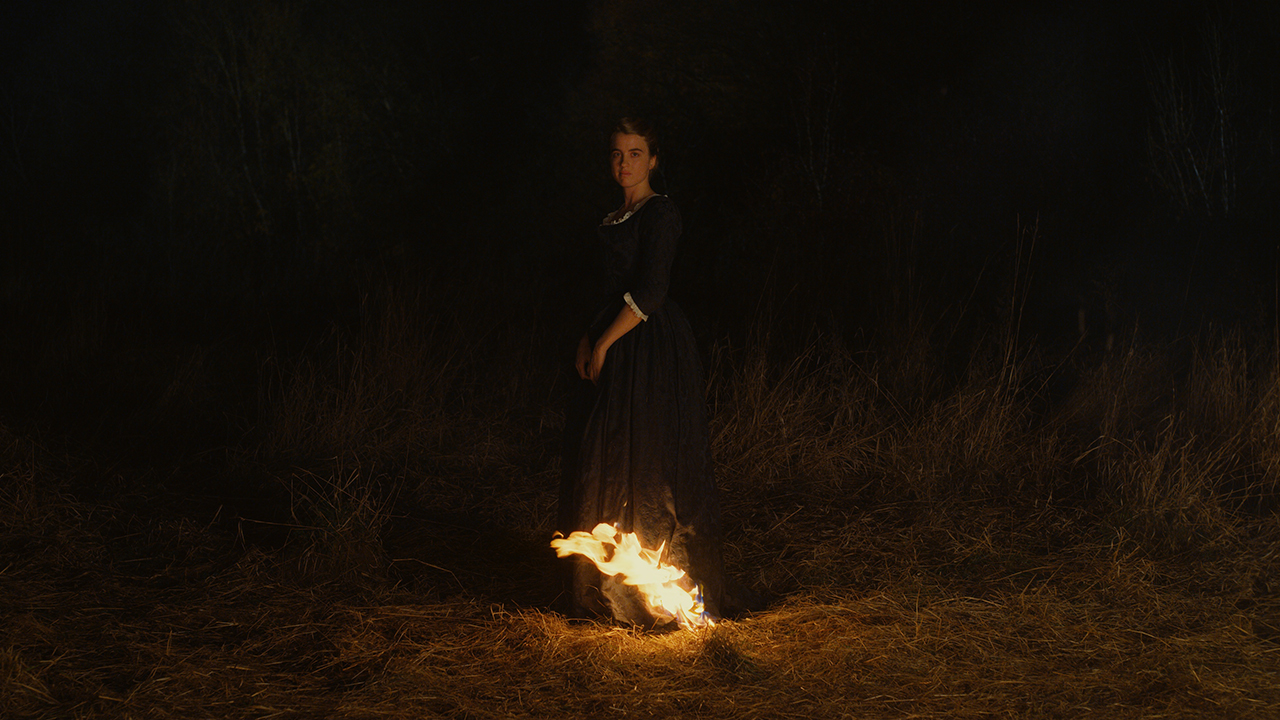Portrait of a Lady on Fire: "There is a hint of Hitchcock to the pull of its desires..."
Total Film reviews the latest by Céline Sciamma, director of Girlhood. It could win the Palme d'Or at Cannes 2019

At first glance, French filmmaker Céline Sciamma’s fourth feature, Portrait of a Lady on Fire, seems like a radical departure. Radical, that is, in its classicism, as the writer/director known for Water Lilies, Tomboy and Girlhood – all modern tales, in setting and theme – offers a painterly period drama set in 18th-Century Brittany. But while the elegant style is largely traditional, with Sciamma showing little interest in fucking with form à la, say, Sofia Coppola’s Marie Antoinette or Yorgos Lathimos’ The Favourite, the scenes, themes and women depicted are as progressive as anything in Sciamma’s earlier work.
Portrait of a Lady on Fire, like those earlier works, is concerned with the fashioning of its protagonists’ identities. The action centres on Héloïse (Adèle Haenel) and Marianne (Noémie Merlant), the former fresh out of a convent and being readied for marriage to a Milanese gentleman, and the latter hired by Heloise’s mother (Valeria Golino), a countess, to act as her daughter’s walking companion. Well, that’s the story – Marianne is an artist, and the real reason she’s been hired is to paint Héloïse’s portrait so that the man from Milan might view the proffered bride. Héloïse would never pose for such an endeavour – she has, in fact, already sent one artist packing – and Marianne must therefore commit her features to memory so that she might paint the portrait within the confines of her chamber, alone.
Initially frosty, Heloise thaws over the course of several perambulations and conversations, responding to the attentiveness of Héloïse’s gaze and returning it with interest. A romance develops, sensual and intense, though this is no Blue Is The Warmest Colour 2 and Sciamma is no Abdellatif Kechiche. In fact, anyone desiring to study the differences between the male and female gazes need only watch Portrait of a Lady on Fire and Blue Is The Warmest Colour as a double bill.
Painting a stunning portrait

More interested in words, intellectual curiosity and social decorum than naked lust, Sciamma has here painted a stunning portrait of two ladies, and both of her actresses are indeed on fire. But this is more than just a romantic-drama or a character study, excellent as it is in those departments. It has much to say on the act of creativity, on how women were painted out of the arts (at the time the movie takes place, women were not allowed to paint men) and how the patriarchy determined a woman’s every move, her every right, her very fate. This last is especially pertinent – and, sadly, relevant – in a subplot involving a servant, Sophie (Luana Bajrami).
For all of its composed sumptuousness, Portrait of a Lady on Fire makes for thrilling viewing. There is a hint of Hitchcock to the pull of its desires, and an eerie quality to Marianne’s repeated visions of Heloise is her white wedding gown, emerging from midnight-black shadows before disappearing like a ghost. A night-time sojourn to a crackling bonfire, meanwhile, is at once rhapsodic and uncanny, while also lending a literalism to the film’s title to go with its metaphorical meanings.
This will surely be among the prizes – Haenel and Merlant might share the Best Actress award, or Sciamma could take Director. Perhaps we can even hope that she becomes just the second woman in the festival’s history (after Jane Campion for The Piano, in 1993) to win the Palme d’Or.
For more coverage of Cannes 2019, read our review of Robert Eggers’ The Lighthouse, starring Robert Pattinson and Willem Dafoe.
Sign up for the Total Film Newsletter
Bringing all the latest movie news, features, and reviews to your inbox
Jamie Graham is the Editor-at-Large of Total Film magazine. You'll likely find them around these parts reviewing the biggest films on the planet and speaking to some of the biggest stars in the business – that's just what Jamie does. Jamie has also written for outlets like SFX and the Sunday Times Culture, and appeared on podcasts exploring the wondrous worlds of occult and horror.


